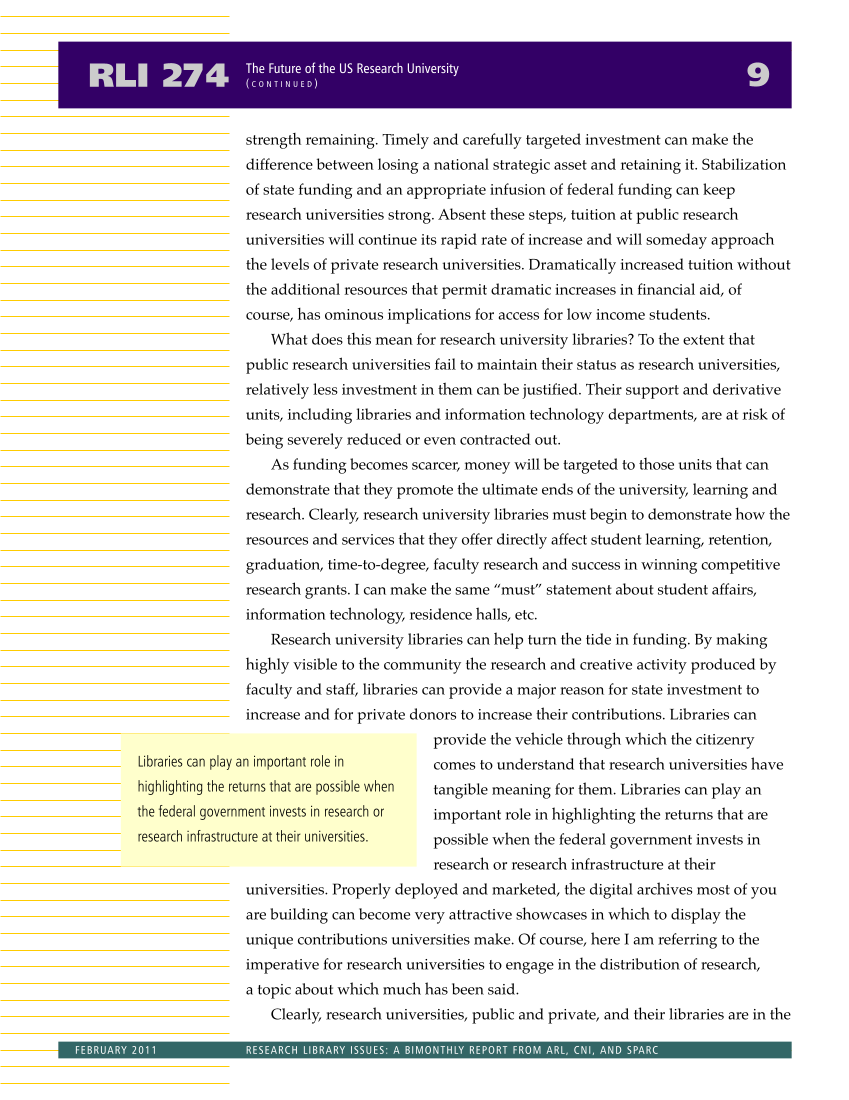strength remaining. Timely and carefully targeted investment can make the difference between losing a national strategic asset and retaining it. Stabilization of state funding and an appropriate infusion of federal funding can keep research universities strong. Absent these steps, tuition at public research universities will continue its rapid rate of increase and will someday approach the levels of private research universities. Dramatically increased tuition without the additional resources that permit dramatic increases in financial aid, of course, has ominous implications for access for low income students. What does this mean for research university libraries? To the extent that public research universities fail to maintain their status as research universities, relatively less investment in them can be justified. Their support and derivative units, including libraries and information technology departments, are at risk of being severely reduced or even contracted out. As funding becomes scarcer, money will be targeted to those units that can demonstrate that they promote the ultimate ends of the university, learning and research. Clearly, research university libraries must begin to demonstrate how the resources and services that they offer directly affect student learning, retention, graduation, time-to-degree, faculty research and success in winning competitive research grants. I can make the same “must” statement about student affairs, information technology, residence halls, etc. Research university libraries can help turn the tide in funding. By making highly visible to the community the research and creative activity produced by faculty and staff, libraries can provide a major reason for state investment to increase and for private donors to increase their contributions. Libraries can provide the vehicle through which the citizenry comes to understand that research universities have tangible meaning for them. Libraries can play an important role in highlighting the returns that are possible when the federal government invests in research or research infrastructure at their universities. Properly deployed and marketed, the digital archives most of you are building can become very attractive showcases in which to display the unique contributions universities make. Of course, here I am referring to the imperative for research universities to engage in the distribution of research, a topic about which much has been said. Clearly, research universities, public and private, and their libraries are in the RLI 274 9 The Future of the US Research University ( C O N T I N U E D ) FEBRUARY 2011 RESEARCH LIBRARY ISSUES: A BIMONTHLY REPORT FROM ARL, CNI, AND SPARC Libraries can play an important role in highlighting the returns that are possible when the federal government invests in research or research infrastructure at their universities.






















